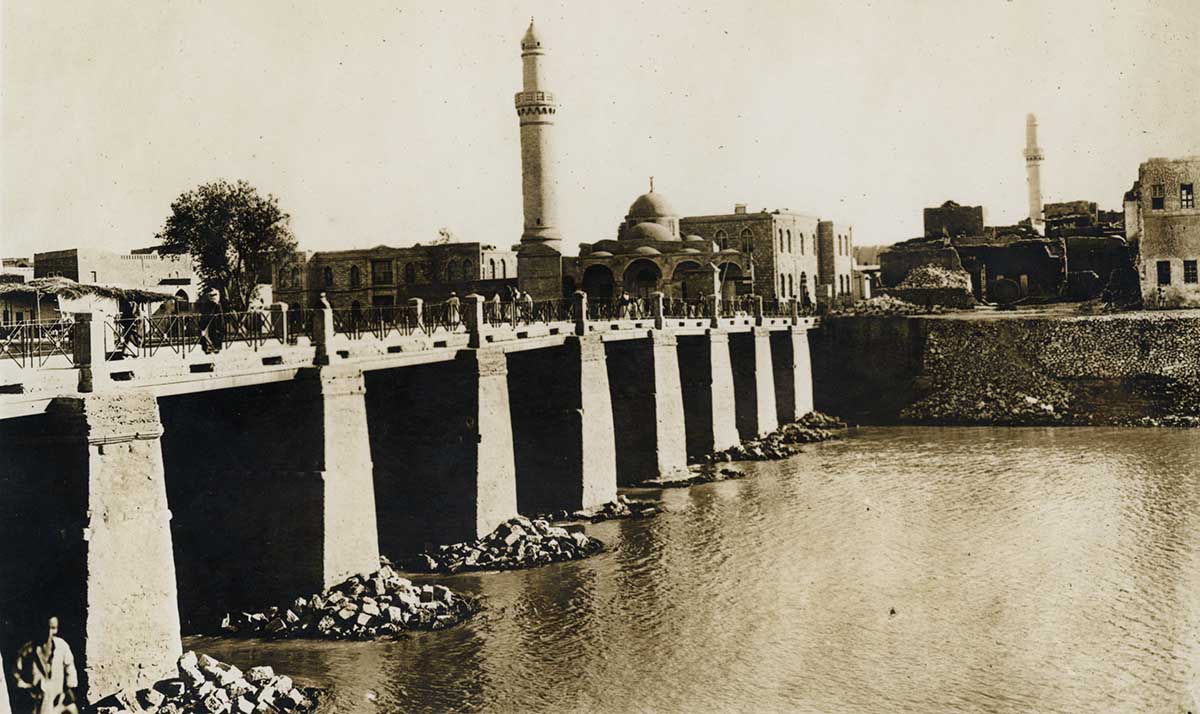
A bridge connecting the east bank of the Euphrates River with the town of Deir ez Zor. Circa 1920s. Phot. Norbert Schiller Collection
In its early history, the city was ruled by the Assyrians, Chaldeans, Persians, and later by the Greeks and Romans. Throughout the Roman period, Deir Ez Zor flourished as a trading hub. However, during the third century CE, when civil wars wreaked havoc throughout the Roman Empire, Queen Zenobia of Palmyra conquered Deir ez Zor and made it part of her kingdom. After Zenobia was defeated and captured by Roman Emperor Aurelian in 271, Deir ez Zor changed hands numerous times until it was completely destroyed in the thirteenth century during the Mongols invasions.

The center of Deir ez Zor, circa 1920s along side a similar scene of the city, circa 1970s. Norbert Schiller Collection
After the collapsed of the Ottoman Empire at the end of WWI, modern day Syria came under French mandate and the French army established a military base near Deir ez Zor. When Syria gained independence in 1945, Deir ez Zor became a farming backwater. It wasn’t until the discovery of oil in early 1980s, that the city reinstated its status as a hub.
The following exhibition features two galleries. The first shows twenty-two rare hand-colored studio portraits by Armenian photographer Karawan. Patrick Godeau discovered the collection when he visited Deir Ez Zor in 2003, and acquired the photos from the late photographer’s family which, at the time, still ran the studio. In the accompanying story Godeau describes how he acquired the photos. The second gallery features photographs of Deir ez Zor from the 1920s to the early 1970s.
